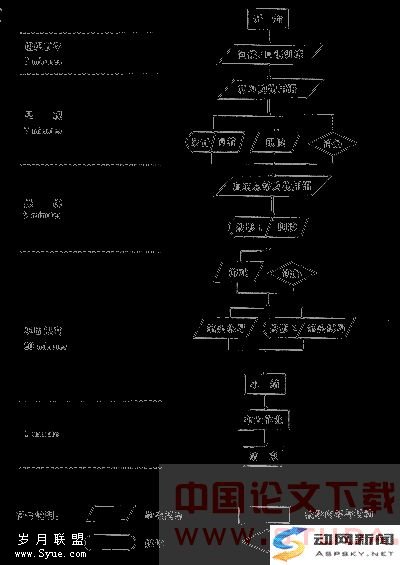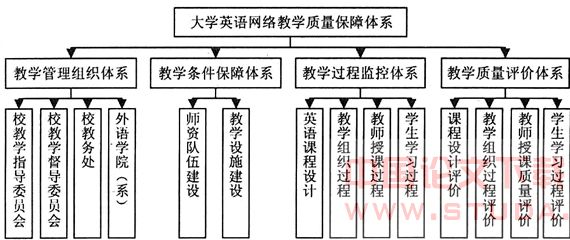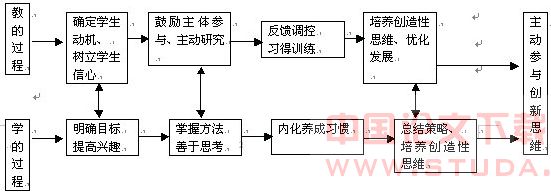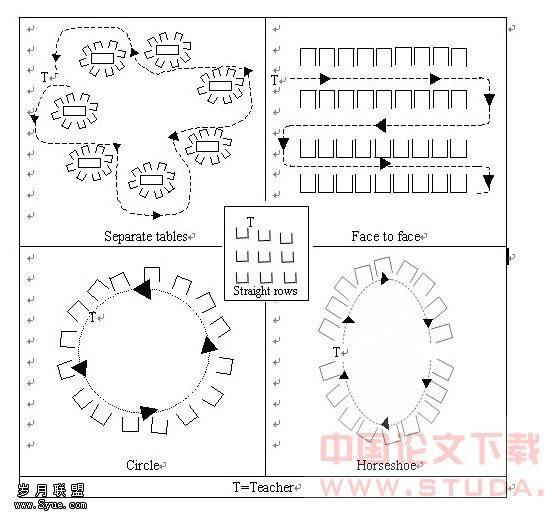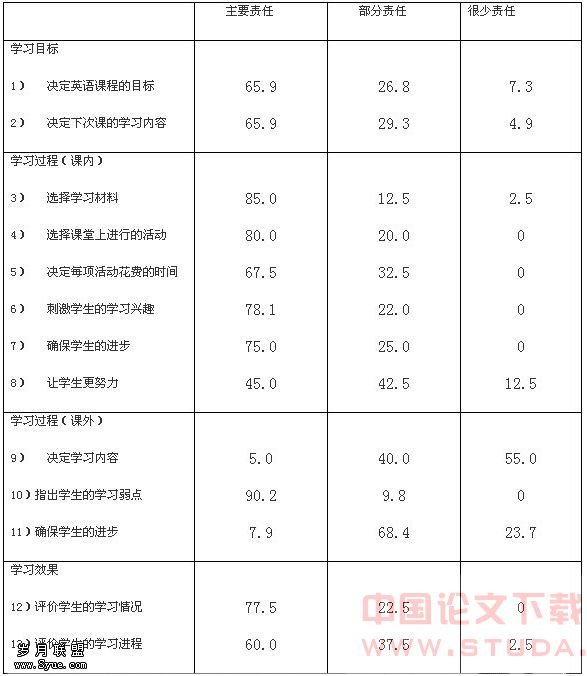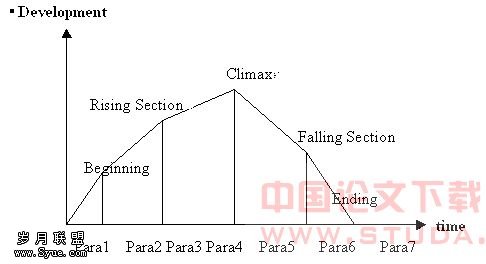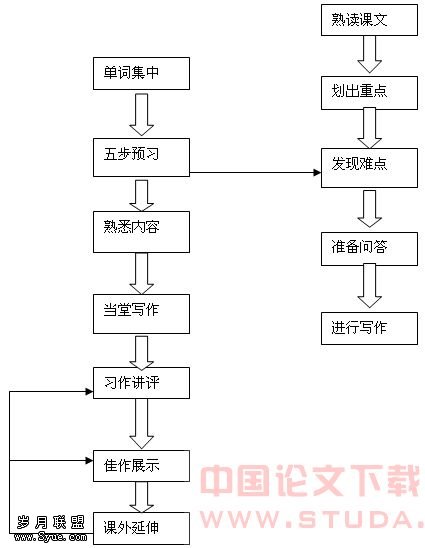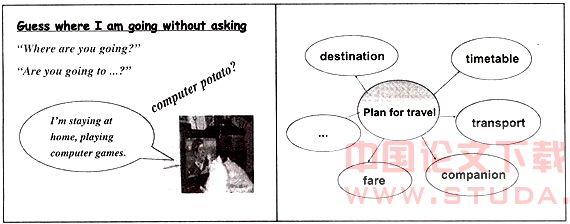初中英语口语教学的课堂管理
[Abstract] This paper focuses on the classroom management in junior high school oral lesson. An active and harmonious atmosphere with rational authority of the teachers and their good rapport with the students has a great influence on promoting students’ speaking ability. Efficient classroom management can be achieved when three conditions are met. First, in an oral lesson, both teachers and students need to play various roles on the basis of mutual cooperation and thus create a harmonious atmosphere for speaking. The teacher plays such important roles as organizer, controller, assessor, prompter, and participant. While the teacher plays his or her roles in a language classroom, the students are also responsible for their learning and playing a lot of roles. Second, the most common student groupings in oral lesson are lockstep, pair work and group work. Third, discipline means a code of conduct which binds a teacher and a group of students together so that learning can be more effective. This paper analyzes three common kinds of indisciplined acts in oral English lesson and some useful teaching solutions have been put forward as well.
[Key Word] classroom management; oral English lesson; junior high school
[摘 要] 愉快、和谐的课堂气氛,良好的师生关系和理性的教师权威,有助于学生的学习。行之有效的口语课堂管理受三大因素影响。首先,教师和学生扮演恰当的角色为英语口语练习创造一个和谐的环境。教师作为教学的组织者, 掌控者, 评估者, 提升者, 及参与者在课堂教学中的作用不可言喻。在教师进行言传身教的同时, 学生也履行他们的职责,在口语课上扮演着相应的角色。其次,根据活动要求, 在口语课堂上学生会进行各类小组活动, 最常见的是一对一练习和分组活动。最后,课堂纪律作为一种制约教师和学生的行为规范, 对保证课堂教学活动的顺利进行是必不可少的。笔者指出三类最常见的学生违纪行为,并根据这三大类违纪行为提出了一些相应的应对措施。良好的课堂气氛是初中口语教学顺利进行的先决条件。
[关键词] 课堂管理;英语口语课;初中
1. Introduction
Classroom management is one of the most significant factors that contribute to the efficiency of the teaching and learning activities, especially in junior high school oral English lesson. A dynamic and harmonious atmosphere with rational authority of the teachers and their good rapport with students has a great influence on improving students’ speaking ability. In oral English lesson, teachers organize what goes on in the classroom and try to create a relaxed atmosphere so that students have a good opportunity to speak English in class. Efficient classroom management can be achieved when teachers born in mind the following three conditions:
(1) The teacher and the student play appropriate roles.
(2) The students are grouped according to the speaking activities.
(3) Discipline and harmony in classroom speaking.
2. Factors affecting classroom management
Nancy K. Hill, in her essay “Teaching as Mountaineering” establishes her idea that “the mountaineer accepts the guide’s leadership role, because the guide has a quiet authority about each of them. Both them recognize that the journey depends upon close cooperation and active participation by each member of the group”[1]. This is true of speaking in a foreign language. Both teachers and students need to play various roles on the basis of mutual cooperation and thus create an effective and harmonious classroom atmosphere for speaking.
2.1 Teacher roles
Classroom management is the way teachers organize what goes on in the classroom. So many people consider the role of the teacher a significant component of efficient classroom management. However, some researchers regard the role of the teacher as part of the design of methodology or approach. As Richard and Rodgers in the book Approaches and Methods in Language Teaching point out “different approaches stipulate different roles for the teacher”[2]. Although different approaches stipulate different teacher roles, there are some common roles that teachers play in most of the approaches concerning classroom speaking. Based on the function that the teacher performs in different activities, Harmer defines “the teacher’s roles as organizer, controller, assessor, prompter, and participant” [3].
2.1.1 Organizer
The most crucial and difficult role played by a language teacher is to be an organizer. The major responsibility in organizing activities is increasingly important for the teacher because nowadays task-based activities are advocated in many approaches. It is true of speaking a foreign language. Speaking tasks or activities motivating the students to participate are the key for a successful junior high school oral English lesson. It is in doing this that teachers have the most freedom and most challenge, but there are two aspects they must keep in mind. First, as the beginners, students’ pronunciation is poor, so it is necessary for the teacher to integrate some pronunciation work. However, great care should be taken over the distinction between pronunciation and phonetics. Although phonetic rules regarding what sounds a letter or a cluster of letters should be pronounced are helpful for students to develop the ability to cope with English pronunciation, they are more abstract and less meaningful. So the teaching of pronunciation should focus on the students’ ability to identify and produce English sounds themselves instead of focusing on reading and writing phonetic transcripts of words. Stress and intonation are important and should be taught from the very beginning. In the example below, different intonations for “sorry” indicate different meanings. A neutral tone would indicate a normal apology. However, a sharp falling tone or a rising tone would mean the opposite.
Teacher: Would you please turn down the radio a little bit?
Students: Sorry.↓(No, I don’t want to.)
Or
Students: Sorry? ↑(What did you say?)
Second, before students start the activity, it’s vital for the teacher to give instructions clearly and concisely so that students know what to do and how to do it. Think about both what you are going to say, and how you are going to say it. However, especially with elementary learners, even simple, clear, familiar language is not always sufficient to get complex message across. So the students may need a demonstration of the activity as well. Teachers can help learners understand what they say in English by simplifying their speech and using gesture or mime. “It is essential for a teacher to be a bit of an actor. That is part of the technique of teaching, which demands that every now and then a teacher should put on an act to make his or her lesson interesting and vivid. Children, especially young children live in a world that is rather larger than life”[4].
2.1.2 Controller
In oral English lesson, the freer time given to students to do speaking activities, the more easily the class will be out of control. So the teacher’s control over the activities can help to run the class smoothly and efficiently. For instance, when students do speaking tasks, it is very important for the teacher to control the time. Especially when students do pair work, the teacher should require them to practice within a certain time. One of the characteristics of successful speaking tasks is that students have the maximum foreign talk. However, the duration of one lesson is limited. How to make sure that students can have the maximum foreign talk in such a short time? Obviously, an appropriate degree of control by the teacher over the class is vital and absolutely necessary. Besides the teacher’s control can ensure that the students use certain target language items and their production has a degree of accuracy.
A very thing concerning class-control that the teacher must not neglect is the degree of control over the class. Only appropriate degree of the control brings about efficiency. Over-control will do no less harm to students than no control at all. Some teachers use terms like controlled practice, half-controlled practice, and free practice which indicate the different degrees of control over the activities on the part of the teacher. There are a lot of oral practice activities, which can be sorted into two classes: oral accuracy practice and oral fluency practice. When doing accuracy practice, it is necessary for teachers to control accuracy practice, because the main objective of it is to get learners to begin to produce formally correct versions of new items. On the other hand, in oral fluency practice, the main objective is to get them to use the items in conversations and other communication without hesitation, even if they make mistakes. So the teacher should half control or even free control oral fluency activities.
2.1.3 Assessor
It is the teacher’s responsibility to make assessment of the students’ performance. As an assessor, the teacher does two things: correcting mistakes and organizing feedback. Hedge, T in his book Teaching and Learning in the Language Classroom points out “In many foreign language situations, where there is little exposure to English or practice available in the community, error correction is an expected role for the teacher”[5]. Speech is spontaneous, that is, speech is full of false starts, repetitions, incomplete sentences, and short phrases. So, should the teacher expect the students to produce complete sentences without mistakes in the language classroom? That depends on what type of activities the teacher organizes. Naturally, the way the teacher gives feedback and correction should be different. “In accuracy work, the emphasis should be on the language forms, and in fluency work, the emphasis should be on effective and hesitation-free communication”[6].
Another important thing the teacher should be concerned is that they should not themselves correct the students’ errors but help the students to self-correct. It is an untrue common assumption among teachers and students that it is the teacher’s job to correct students, which will result in students’ passive study and non-ability to correct themselves. The trick for teachers is to get students used to self-correcting, and to give them help when necessary. There is a common three-step method that teachers use for helping junior high school students to self-correct.
(1) The teacher should first give students the opportunity to correct themselves, helping as necessary (self-correction).
(2) If one student cannot self-correct, the teacher should invite other students to make the correction (peer correction).
(3) If no other students can make the correction, the teachers should make the correction themselves (teacher correction).
Organizing feedback is an effective way to evaluate students’ performance so that students can see how well they are doing. When monitoring the class, teachers can take notes that will help them to provide accurate feedback later. After students finish the tasks, they can deal with major errors they noted like this: they can select students to give examples of what they said or report on what they did, or they can write examples on the board for the students to correct. Students at the age of 13-15 are fear of “losing face” in front of their peers, so when organizing feedback, the teacher should pay attention not to hurt them, but focus on students’ success or progress, trying to combine encouragement with honest evaluation and useful feedback, so that success-oriented learning atmosphere can be created.
2.1.4 Prompter
While students are doing the activity, may it be a pair activity or a group activity, it is inevitable that they come across difficulties of one kind or another. Then the teacher’s role at this time is a prompter. His or her obligation is to help and encourage students. For instance: When teaching the topic Why is Beth crying?(unit 5 Project English Grade Eight), there is a word “blue” in the sentence “she looks so blue and unhappy” that puzzles students. At this time, the teacher should explain the “blue” means “bad mood” in eastern countries; when a student couldn’t answer the question, the teacher can give hints; when a student finishes with a very short answer. The teacher can elicit more by saying “and…” “Anything else?” “Yes, but why…?” .
One thing the teacher must concern is that they should use the foreign language for classroom management. “This approach involves exploiting for language learning not only the planned activities, but also the classroom management that revolves around them”[7]. It provides a rich source of communicative needs in the foreign language classroom, which exert a subtle influence on training students’ spoken ability. Nowadays, many teachers use the students’ mother tongue in class. Although it may often be a necessary decision in the interests of organizing the lessons clearly and efficiently, it also means sacrificing valuable opportunities for well-motivated foreign language use and devaluing the foreign language as a vehicle for communication.
2.1.5 Participant
The process of the classroom teaching is the process of the emotional intercourse between the teacher and the student. A dynamic and harmonious atmosphere with rational authority of the teachers and their good rapport with the students has a great influence on the efficiency of students’ learning. Once the teacher has finished giving instructions and the activity has started, the teacher should not stand in front of the classroom with nothing to do. He or she should be mobile and monitor what the students are saying and take notes for feedback. Besides monitoring the class, the teacher can also join one or two groups as an ordinary participant, which is a good chance for teachers to foster an affectionate and cooperative atmosphere. Young children at the age of 13 to 15 are fond of those teachers who are friendly to them, and they hope teachers can be their good friends. Of course, the basic require for the teacher being a participant should not dominate or appear to be authoritative, although it is a good chance for students to practice English with someone who speaks it better than themselves. In a word, it encourages the teacher to participate in students’ activities in task-based teaching methods.
2.2 Student roles
While the teacher has his or her roles in a language classroom, the students are also responsible for their learning. In an oral lesson, the students should play a lot of roles.
First, the student should be a good er. In oral English lesson, it’s important for the students to listen to their teacher carefully and give their attention to the information given by both teachers and classmates. Before doing the activities, they should be absorbed in the instructions the teacher given, so that they can ensure how to start an activity, or what to do next, or what to say next. During the communication, they should attend to the information given by their partners and then think how to continue the conversation.
Second, the student should be a cooperator. Cooperation seems very important in oral lesson. In oral lesson, in response to the need of the tasks, students are often divided into groups of different sizes. All students in one group need to work with together, making conversations and solving problems cooperatively. As long as one group member is lack of cooperation, the activity can’t be finished smoothly and effectively.
Last but not the least, the students should be an individual learner. They must subconsciously learn to work independently in class or at home, taking full responsibility for their own performance and learning. Generally speaking, speaking is not carried out individually. However, lesson planning before speaking can be done in individual. When doing lesson planning, it requires students to search correlative information before class, which is good for promoting autonomous degree of students. Learner autonomy plays a key role in success of foreign learning. There is such a saying in China “Give a man a fish, and you feed him for a day; teach a man to fish, and you’ll feed him for a lifetime”. Learner autonomy has been admitted to be such fishing ability that can benefit a person’s whole life. In a word, individual study is absolutely useful for enhancing students’ speaking ability.
3. Classroom management in oral English lesson
3.1 Student Grouping
In oral English lesson, for much of the class time, students are broken down to groups of different sizes that depend on the activities. This is an important feature of today’s language classroom. The most common student groupings in oral lesson are lockstep, pair work and group work.
3.1.1 Lockstep
“Lockstep is the stage where all the students are under the control of the teacher. That is, the whole class attends to the same activity at the same rhythm and pace”[8]. Lockstep is often adopted when the teacher is making a presentation, checking exercise answers, or doing accuracy reproduction. Before doing pair and group work, the teacher should make presentations first. Take the dialog Why is Beth crying? for example, the teacher can play the tape first with students just listening. Then play the second and third time to ask students to read following it. Until students are familiar with this dialog, the teacher can ask a student to play Helen’s role and develop a conversation like this:
Teacher: Hello, Helen. Anything wrong?
Helen: It’s Beth. She looks so blue and unhappy.
Teacher: Oh dear! I’m sorry to hear that. What seems to be the problem?
Helen: She is crying in the washroom…
After the drilling, the teacher can require students to make the conversations with their partner within 3-5 minutes. When doing lockstep, the teacher should not speak too much. If the teachers talk too much of the time, he/she will run the risk of “jug-and-mug” method, and thus take away valuable practice time from the students, though his/her speech could be a good model and authentic input. What the teacher should do is to elicit replies or answers from the students as much as possible.
3.1.2 Pair work and Group work
“Pair work is strongly advocated where communicative methodology is applied. As the name suggests, two students or learners work together on a certain task or exercise”[9] .
Group work is a learning activity which involves a small group of learners working together. What students do in group work is similar to pair work, only there are more members in the group. Each group has more than two students, depending on the activity.
The advantages of pair and group work are as follow:
— variety and interest
— an enormous increase in individual practice
— low-stress private practice
— opportunities to develop learner autonomy
— interaction with peers
— development of tolerance, mutual respect and harmony
In oral practice lesson, the most common student groupings are pair work and group work. The more students talk in the foreign language, the more successful a speaking task is. The reason for using small group work is that first it increases the time for each student to practice speaking in one lesson. The only way to form a skill is to practice it. No one expects to be good at playing basketball the first time they try even if they already know all the rules very well and have watched others play many times. The same is true of speaking a foreign language. Since the Chinese students have not enough opportunity to practice speaking in English outside the classroom, it is teachers’ responsibility to give them as many opportunities in the classroom as possible. Second, young children are often afraid of criticism or losing face or they simply feel shy about speaking in a foreign language in front of a whole class. Third, speaking in small groups is more natural in real life.
When teachers introduce learners to pair work, they should organize very simple, clear, and brief tasks. “Brief” means tasks that take only one or two minutes. For example, if the teacher is going to use some pictures of weather condition, he or she could develop a conversation like this:
“Teacher: What’s the date today?
Students: It’s…
Teacher: What’s the weather like in picture 1?
Students: It’s cold, but quite sunny and cloudy”.
Teacher: …Good. Now, look at the other eight pictures, please make conversations with your partner according to this conversation.
Once they have done this kind of simple task successfully, they can move on to progressively longer, more complex, and free task. There are many other simple but effective speaking activities, especially for intermediate or small groups. For example, the teacher can simply say ‘What a great holiday that was!’, and then sit down and wait for questions. If nobody asks a question, the teacher can write cues on the board, for example, ‘When…?’, ‘Where…?’, ‘Who with…?’, ‘How long…?’. After having answered a good number of questions, the teacher can put the learners into groups and invite one person in each group to say ‘What a great holiday that was!’. Other topics can be handled in the same way, for example, ‘What a terrible night that was!’, ‘What an exciting experience that was!’
However, while doing group work, the biggest problem is how to group the students. Below are two possible ways:
(1)Group the students according to seat arrangement. For example, according to the speaking activities, the teacher can divide the students into a shape of triangle, quadrangle, or trapezium.
(2)Quick-learners and slow-learners are mixed together. Quick-learners can help slow-learners when doing the speaking activities.
3.2 Discipline and harmony in the classroom
“Discipline does not mean a series of punishment meted out to badly-behaved students, but refers to a code of conduct which binds a teacher and a group of students together so that learning can be more effective”[10]. To some extent, discipline is a factor that determines how successful an oral lesson is. Discipline is the main preoccupation of some teachers, especially teachers of children and adolescents.
3.2.1 Students’ indisciplined acts
In oral lesson, students’ indisciplined acts could be numerous. One common problem in speaking activities is that students often produce one or two simple utterances in English and spend the rest of the time chatting in Chinese.
Another common problem is that when students are doing pair work and group work, difficulties and risks are associated with them, for example:
(1) The learners may be confused about the task and not do it properly.
(2) Causing too much noise.
(3) The teacher may lose control of the class.
At last, maybe there will be some problem-making students. They are making noise in class, refusing to cooperate with peers, or causing disturbance.
3.2.2 Teaching solutions
When the indisciplined acts occur, the teacher should take the most appropriate measures to put things right. According to the above indisciplined acts, some useful teaching solutions have been put forward.
(ⅰ) Enhancing students’ motivation
As survey indicates that motivation is one of the most important aspects in successful language speaking. Students are eager to speak, when the topic is interesting or there is a clear objective that must be reached. The younger the children, the more your lesson plans should consist of games, vocabulary linked to pictures, manual activities such as drawing and coloring, songs and stories. So teachers should organize different types of speaking tasks to increase and maintain the motivation of students The teacher can only describe a situation but no model script to inspire students’ imagination, for example:
The living room of a house at one o’ clock in the morning. The parents have been waiting up. The 14-year-old son/daughter has just arrived home.
They may also have a card for each role, for example:
Mother you are furious; you phoned your son/daughter’s best friends, Adam and Alice. Your son/daughter was not with either.
Father you are a bit angry, but you are tired and would prefer to go to bed and talk tomorrow.
Son/daughter start by lying that you were studying at Adam’s house; then that you were at a party at Alice’s house; finally, tell the truth that you went to a disco or other reasons.
Get the students to improvise the discussion in groups of three—Mother, Father and Son/Daughter. If they have role cards, they should not look at others’ cards. When the groups finished their improvisations, get one or more of them to act out their role-play in front of the class.
Besides, great care should be taken to make sure the task is in line with the students’ ability to deal with the task. If the speaking task is above their level, junior high school students who lack too much vocabulary, will simply become frustrated and demotivated. On the other hand, if the task is too easy, the students may think it is childish and thus lose interests. In such conditions, the students are likely to give up or revert back to the native language.
(ⅱ) Managing pair and group work
If the teacher can prepare and organize carefully, and train the student to participate fully and effectively, the advantages of pair and group work will far outweigh the drawbacks.
After the teacher chooses topics and tasks that will activate students and prepares lessons thoroughly, it is wise to begin the lesson in a fairly formal or even strict way, and relax little by little as the teacher gain the cooperation of the group. But problems may arise soon if the teacher does not follow the following basic recommendations:
(1)Remind students not to make noise but keep voice down and follow the teacher’s instructions while doing pair work and group work.
(2)Train the learners to stop talking when giving a certain signal, for instance: a raise hand, or point at the watch to indicate that the teacher is about to end an activity.
(3)Monitor the activity: move among the pairs or groups as quickly as possible, ing for major problems and helping the students when necessary.
(4)Use humor constructively.
(5)Be warm and friendly to the students instead of patronizing them.
If the class seems to be getting out of control, or if the indisciplined acts occur due to the inappropriate activity, the teacher should change the activity as soon as possible.
(ⅲ) Dealing with the problem-making students
Problem-making students usually are those students who want to arouse their teachers and their peers’ attention through their indisciplined acts. But actually they are not aware of the blight of their indisciplined acts. So when the teachers are trying to act against their in-disciplined acts, they should pay attention not to hurt them. Below are some useful advice for dealing with problem-making students:
(a) Use non-verbal signals
The teachers should momentarily sense whether each student has listened to them carefully or not in the class. If they realize one or two students behave inappropriately, the teacher should use non-verbal signals to give them hints, such as making a meaningful glance, using the gesture and so on. This method avoids wasting other students’ time and calling their attention. For example, if one student goes out of the way and speaks loudly in the native language, it is better for the teacher to go up to him and stand beside him for a while than draw the attention of the whole class by loud, repeated instructions.
(b) Rearrange the group members
If troublesome students are in the same group, the teacher should separate them. There is a saying “if you live with a lame person you will learn to limp” in China. If the “bad” students mix together, they only learn “bad” things. Fortunately, those “bad” students are only a small handful. So once the teacher can mix one “bad” student into a group of good students, the good students’ behaviors will exert a subtle influence on the “bad” student’ behavior. Besides, as to one or two extremely piquant students, it is better to move them to the front of the class so that they may behave better.
(c) Encouragement principles
If every precaution and effort on the teachers’ part, there is still a group of students who seem to make trouble. At last, the teacher may need to use some kind of important punishment. However, some teachers’ action is too impolite or even cruel when they criticize troublesome students, which result in the ripple effect. No matter how piquant the student is, they are always fearful of being punished, not because of fearing the punishment itself, but losing face in front of their peers. This is the common mental character of the students at the age of 13-15. So if the teacher slump them into an embarrassed condition, although they receive the punishment ostensibly, virtually they are disaffected. How to make them sincerely convinced? Should the teacher report those troublemakers to the school principal? Of course it is not better for teachers to do that. What the teacher should do is to use the well-meaning punishment. For instance, as to talkative students, who have not spoken English in response to the teacher’s instruction, but are always deliberately chatting in Chinese, the teacher can ask the student to stand in front of the class and tell a story. After he finishes, the teacher and the rest of students praise his eloquence and give him applause. Then the teacher changes the topic to his in-disciplined acts, and persuades him to apply his advantage to learning English. As being given the teacher’s punishment in such a comfortable atmosphere, this student is willing to accept the punishment and then rectify his indisciplined act.
(iv) Teachers’ leadership
The teacher’s leadership has directly influenced on the classroom atmosphere. After some research to the leadership of teachers, Lippitt &White have sorted it into three types “authoritarian leadership, democratic leadership, and laissez-faire leadership”[11].
“Authoritarian leadership is that the teacher determines all teaching process in the class, and the students have no free but only obey to the teacher’s order, which often pull students into a high-anxiety”[12].They are afraid and dislike their teacher. Under this leadership, students are easy to bring frustrate feelings, and then form ill mood or even do in-disciplined acts. However, when the lesson has disintegrated into chaos, this leadership may always control the situation effectively. The class is easier to out of control than any other subjects when doing speaking tasks. So it is necessary for teachers to power upon the class at a particular time.
“Laissez-faire leadership is that in the teaching the teacher only provides the material to the students, and assigns homework with no plan, no advice, and no help”[13]. This leadership easily results in such situation: students do what they want to do individually in a disordered and noisy classroom atmosphere in which the learning activities are inefficiency. The teacher should avoid being this laissez-faire leadership especially when in an oral lesson.
Democratic leadership is that the teacher regards the whole class as an umbrella, of which the teacher is the main stand, and the students are the facies and the discipline is the branches of the stand. These three parts are inseparate and indispensable. After the discussion of the speaking tasks, the teacher brings forward the aims of the lesson and the appropriate teaching process. The students open their minds and organize the tasks themselves. During the activities, the teacher gives them proper help. After the activities, the teacher is sensitive to get a balance between correction and encouragement. Under this leadership, there is active and harmonious atmosphere in speaking.
In a word, a proper leadership of the teacher will bring a tuneful classroom atmosphere. Democratic leadership is the most prominent leadership in the foreign language teaching.
4. Conclusion
A dynamic and harmonious atmosphere with rational authority of the teacher and his or her good rapport with the students has a great influence on the efficiency of students’ English learning. In junior high school oral English lesson, no matter how well the lesson is planned, something unpredicted may easily happen. So if classes are expected to run smoothly and efficiently, three conditions may be met. The teacher and the student play proper roles and take full responsibility to foster an effective and tuneful atmosphere for the lesson so that the class can run efficiently. According to speaking activities the students are grouped appropriately, such as pair and group work. As doing speaking activities for much of the time, some indisciplined acts may easily happen. How to prevent and deal with them in order to make the lesson smoothly and efficiently? Several advice that can be used. All in all, in oral lessons there should be a peaceful and active, harmonious and authoritative atmosphere.
References
[1] 李观仪. 新编教程第六册[M]. 上海外语出版社,1995,2 p243
[2] 杨阳. 英语教学法-技能与技巧[M]. 北京: 高等教育出版社, 2005,8 p308
[3] 同[2] p309
[4] 毛荣贵. 虫英语美文选[C]. 北京: 航空出版社, 2004,5 p328
[5] 赫奇. 语言课堂中的教与学[M]. 上海外语教育出版社, 2002 p288
[6] 戴维斯. 英语教学成功之道[M]. 上海外语教育出版社, 2002 p53
[7] 利特尔伍德. 交际语言教学论[M]. 北京: 外语教学与研究出版社, 2000, 7 p45
[8] 王蔷. 英语教学法教程[M]. 北京: 高等教育出版社, 2000,7 p40
[9] 同[2] p312
[10] 同[8] p43
[11] 黄希庭. 心. 上海教育出版社[M]. 1997,7 p399
[12] 同[11] p399
[13] 同[11] p399
